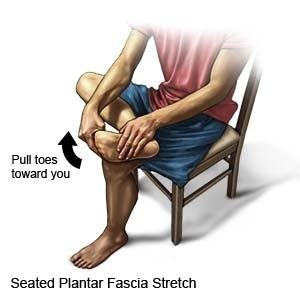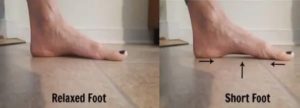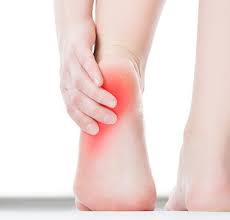What Can You Do About Nagging Heel Pain?
by Drew Satterfield, PT, DPT
AzOPT Gilbert Clinic Manager
Heel pain is one of the more aggravating injuries for those of us who are on their feet for most of the day. At its worst, it prevents us from accomplishing our tasks throughout the day and keeps us from being active the way we want. Let’s discuss ways to manage heel pain and facts to consider before turning to alternative solutions like expensive arch supports and footwear.
There are two primary aspects of your feet that you should observe. The first aspect is range of motion, and the second is the strength of your feet and ankles.
Range of Motion
Having limited ROM in your foot and ankle can dramatically alter how your feet move throughout the day. Consider these stretches to help with your range of motion.
Plantar Stretch
The first stretch you should try is a plantar stretch. Be sure to bring both your toes and your foot towards the same knee. This way, you are stretching both the plantar surface of your foot and a muscle called the soleus, which is one of the muscles of the calf.
Gastrocnemius Stretch
For the second stretch, this movement stretches the gastrocnemius muscle, which is the other muscle of the calf. Ensuring this muscle isn’t tight is important for natural mechanics to occur within your foot and ankle as you walk throughout the day. Be sure to keep both knees straight while standing with your heels off of a step. It is best to perform the stretches at the end of your day, or during lunch, after your muscles are warm from movement. Alternatively, you could also perform these stretches after a warm shower or after using a heat pad for pain reduction.
 Stretch #1 |
 Stretch #2 |
Foot and Ankle Strength
The second aspect to consider is your foot and ankle strength. There are two foundational strengthening exercises to try – one focused on your foot intrinsic musculature, and the other for both the foot and the ankle.
Doming
The first exercise is called doming, as depicted in picture number three. It’s important to keep your toes and heel on the ground, while contracting the arch and lifting it off of the ground. This will strengthen and improve arch control primarily through two muscles named flexor hallucis brevis and posterior tibialis. Once you feel as though you have good control with this exercise, you’re ready to try the next exercise.
Calf Raises
While maintaining good arch control, perform a calf raise. Make sure it is nice and controlled, and refrain from “plopping” back down to the ground. If this is too easy, perform the calf raises off of a step or safe ledge. These exercises will combine quality arch control with functional movement patterns.
 Stretch #3 |
 Stretch #4 |
You can also check out our Instagram for a quick video with a more detailed look at some of these exercises.
If you try these exercises and continue to have pain, feel free to stop by a nearby AzOPT to be fully evaluated. Nagging heel pain can be a difficult issue to solve on your own, so don’t let your pain continue to worsen and prevent you from feeling and living better.
Drew Satterfield is the clinic manager and physical therapist of our Gilbert clinic. If you’re interested in speaking with him directly, please reach out to our Gilbert Physical Therapy clinic.







